In praise of Paul Auster
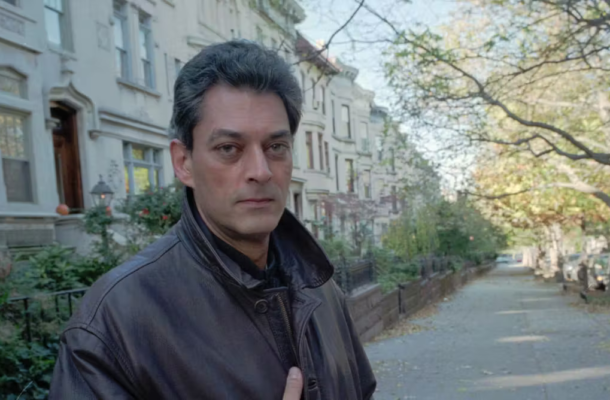
With the passing of Paul Auster, who died of lung cancer on April 30 at the age of 77, the aesthetics of postmodernism retreated another significant step back into the past tense of history.
Auster became closely associated with postmodern style because of his highly self-conscious and self-reflexive fiction. In 2017, he wrote that he “wanted to turn everything inside out”.
Born into a Jewish family in New Jersey, Auster studied literature at Columbia University in New York, but then spent several years working as a translator in Paris. He was influenced not only by fellow Paris exile Samuel Beckett, but French exponents of the nouveau roman, or “new novel”, such as Alain Robbe-Grillet. Indeed, Auster’s own fiction, with its labyrinthine twists and turns, eventually became more popular in France than in the United States.
His first work, The Invention of Solitude, was published in the US in 1982. It was a memoir about his father, and the ironies involved in getting to know more about the circumstances of his father’s difficult life only after his death.
Auster’s career took off in the late 1980s, after the small Sun and Moon Press in Los Angeles persuaded Faber to reprint his New York Trilogy in 1987. This is still probably Auster’s best-known work. Cast in the form of a noirish detective story, like a pastiche of Raymond Chandler, it features a protagonist in New York trying to solve mysteries by deciphering the city’s maps.
But it also explicitly addresses larger questions of coherence. The detective here says “the world is in fragments” and “it’s my job to put it back together again”.
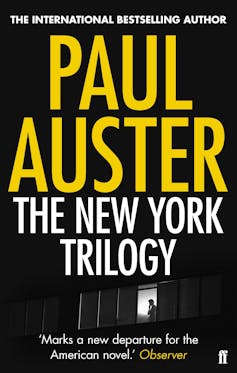
In New York Trilogy, chance and contingency are incorporated into an intertextual maze where all meaning is open to contradiction.
The detective, Quinn, imitates the minimalist characters in Beckett’s play Endgame by sleeping in a metal garbage bin, which provides shelter from the harsh New York elements. He also reorients time by training his body to wake and sleep in 15-minute segments, an alternating process that fits with his understanding of time and space as “relative terms”. If it is night in New York, he observes, “then surely the sun was shining somewhere else”.
Quinn’s conclusion – that “at any given moment, it was always both” – might be understood as a summation of Auster’s intellectual project.
Though his novels are generally narrated in the first person and often include oblique allusions to the author’s life, Auster explicitly denied they were autobiographical. He was interested in representing a multiplicity of selves, the chameleonic nature of human identity. He probes the possibilities of transposing any individual persona into a variety of alter egos.
Standing apart
Auster was well connected with writers based outside as well as inside the US. He was friendly with Australian exile Peter Carey, another longtime resident of New York, and in 2013 published a collection of letters exchanged with J.M. Coetzee, now a resident of Adelaide.
Auster noted in this collection that Coetzee had lived long enough in the US “to understand American life as well as I do, but at the same time you stand apart from this place … in ways that are not possible for me”.
Yet Auster, with his French affiliations and a wife of Norwegian ancestry (the novelist Siri Hustvedt), also succeeded in regarding American culture from an oblique angle.
Another friend of Auster’s, Salman Rushdie, suggested he had “a European sensibility brought to bear on entirely American subject matter”. This sense of creative estrangement haunts Auster’s fictions.
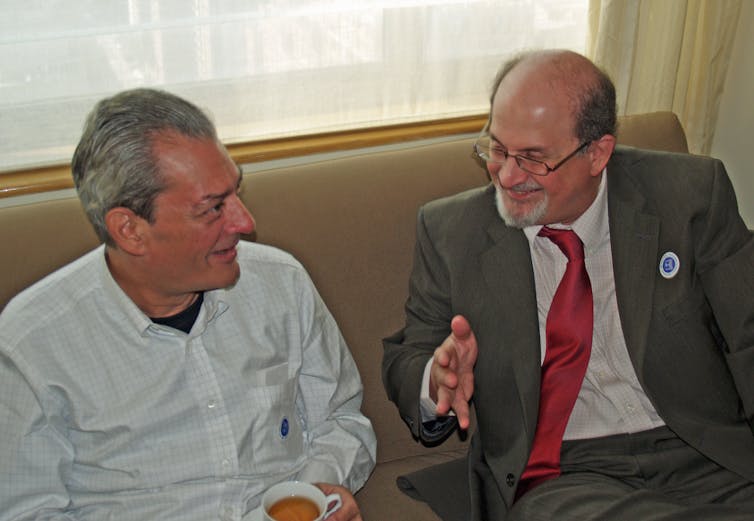
Paul Auster and Salman Rushdie in May 2009.
In one of his letters to Coetzee, Auster noted Coetzee’s intellectual advantage of having been born in a “bilingual” country (South Africa), one that spoke both Afrikaans and English. Coetzee concurred, replying that he felt “a skeptical distance between myself and what I would loosely call the Anglo weltanschauung”.
The same is true of Auster, who lived on a cognitive border between the US and a state of displacement or exile. His sense of aloofness, of standing always at a cerebral distance, did not always endear him to American readers. The Atlantic Monthly, for example, complained of his “pseudo-intellectual writing”.
In fact, Auster’s work often addresses, albeit circuitously, various personal tragedies. The murder of his grandfather by his grandmother, for instance, was broached in The Invention of Solitude.
Auster later returned to this painful scene in what he called a “political pamphlet”, Bloodbath Nation (2023), where he provided the text to a book of photographs by his son-in-law, Spencer Ostrander. The book blamed the US’s notoriously lax gun laws for giving jilted partners the opportunity to turn their murderous fantasies into lethal reality.
In another grim sequence of events, Auster’s son Daniel was charged in 2022 with the manslaughter of his infant daughter and subsequently died from a drug overdose.
Such dark incidents surreptitiously changed the tone of Auster’s fiction.
His earlier narratives tended to play more lightly with the exuberance of magical realism, as in Mr. Vertigo (1994), where a boy of 14 upsets the laws of gravity by levitating himself. The novel is an example of Auster’s preoccupation with imaginative exploration and seeing things differently. New York Trilogy cites Marco Polo and Christopher Columbus, declaring boldly that “Americans have never lost their desire to discover new worlds”.
Auster’s later work inclined towards a more sombre, fatalistic mood. His narrators attempt to reconstitute their lives after various forms of wreckage and loss. His final novel, Baumgartner (2023), is centred around a septuagenarian writer who is attempting, meticulously but pessimistically, to reconstruct his life after the death of his wife in a swimming accident.
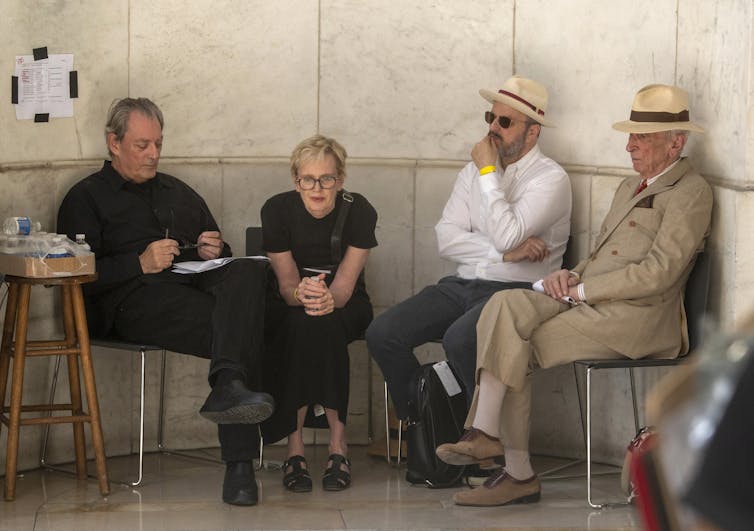
Paul Auster, with his wife Siri Hustvedt, Colum McCann and Gay Talese at an event to support Salman Rushdie.
Randomness, chaos and nihilism
Perhaps the American writer to whom Auster was most indebted is Edgar Allan Poe.
Quinn, the detective in New York Trilogy, writes mystery novels under the pseudonym of William Wilson, the name of the main character in a Poe short story. There are many references in the New York Trilogy to other Poe works, such as The Narrative of Arthur Gordon Pym, in which the eponymous hero sets out for the Antarctic.
Like Auster, Poe enjoyed literary fame in France (where he was championed by the poet Charles Baudelaire) before being recognised as a serious writer in his native America. Auster also resembles Poe in the way he takes issue with the premises of the Transcendentalism that dominated American literature in the mid-19th century and is still influential today.
Ralph Waldo Emerson and Henry David Thoreau, both contemporaries (and enemies) of Poe, are cited plentifully throughout Auster’s work. But Auster’s “city of glass” (the title of the first story in his New York Trilogy) rotates Emerson’s “transparent eyeball” on its axis.
In The Poet (1844), Emerson writes: “As the eyes of Lyncaeus were said to see through the earth, so the poet turns the world to glass, and shows us all things in their right series and procession.”
Auster’s city of glass comprises not this kind of luminous transparency, but rather opacity, chance and contingency.
In an interview, Auster described the “seminal experience” of his life. He was 14 years old and at summer camp when he stood next to a boy who was killed by a lightning strike. The incident forever disrupted the sense of serendipitous “order” he grew up with in “postwar suburban New Jersey”.
He described himself as writing with a “very deep nihilism” informed by “the fact of our own mortality”, though this was countered to some extent by the “extraordinary happiness of feeling yourself alive”.
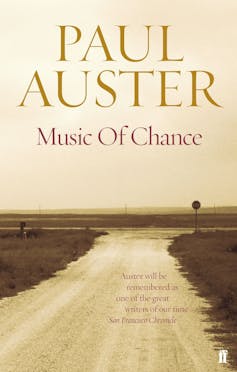
It is perhaps this sense of randomness and chaos, the perception that the world reverberates simply to what he called (in the title of a 1990 novel) “the music of chance”, that brought about Auster’s profound sense of alienation from the US reading public. He disliked the sentimental nostalgia for harmonious “closure” that he associated with mainstream America.
Though his writing is always lucid and affecting, it also incorporates a sense of the author “punning his world”, as he put it in his essay on the schizophrenic French writer Louis Wolfson. According to Auster, Wolfson looks out on his world “through a different lens” and translates it “into a different language”, so he “is able to see it with new eyes.”
Poe also experimented with the capacity of language to shift between alternative positions, reversing cause and effect. His sceptical materialism, at odds with the religious and philosophical idealism of Transcendentalists like Emerson and Thoreau, is one of the reasons why, even today, Poe is often regarded in the US as a renegade and marginal figure.
Auster’s oeuvre was broad and plentiful. It included a fine biography of the American writer Stephen Crane, several volumes of poetry, and the script for Smoke, a film about a Brooklyn cigarette-shop owner, which Auster also co-directed. He lived firmly within a literary and artistic milieu, both domestically and intellectually, and came to be closely associated with his home territory of Brooklyn.
But Auster also turned these artistic influences to productive ends. His work makes a virtue of indebtedness, drawing on the ideas and conceits of early writers, positioning itself carefully in relation to celebrated precursors. In this way, Auster made a genuine contribution to postmodern literature.
His overarching concern was always to question the philosophical as well as the nationalistic basis of self-styled individualism and originality. Challenging settled complacencies, his ludic, mordant and often very funny works of fiction exemplify the limitations as well as the capacities of the human imagination in an unredeemed world.
This article was published by The Conversation.
Paul Giles is a Professor of English in the Institute for Humanities and Social Sciences at Australian Catholic University in Melbourne. His most recent book is The Planetary Clock: Antipodean Time and Spherical Postmodern Fictions (Oxford University Press, 2021).














